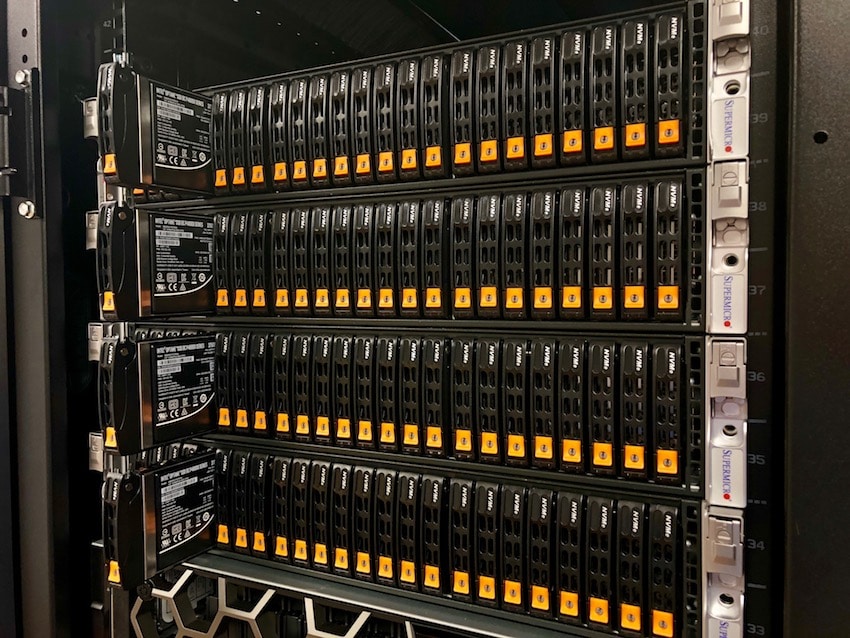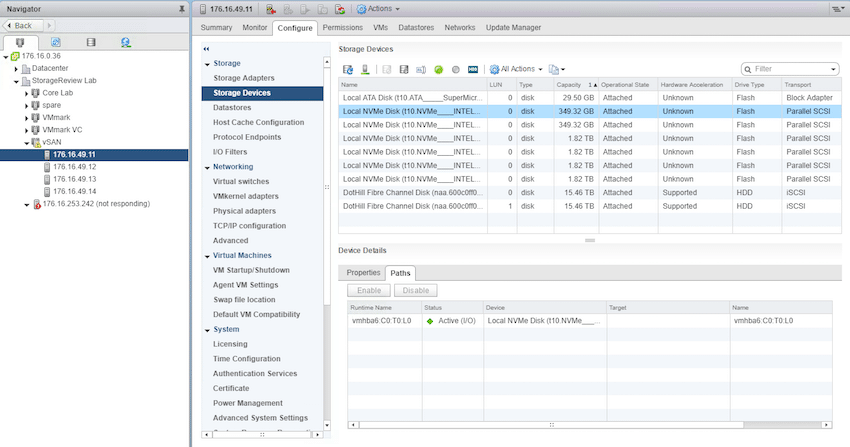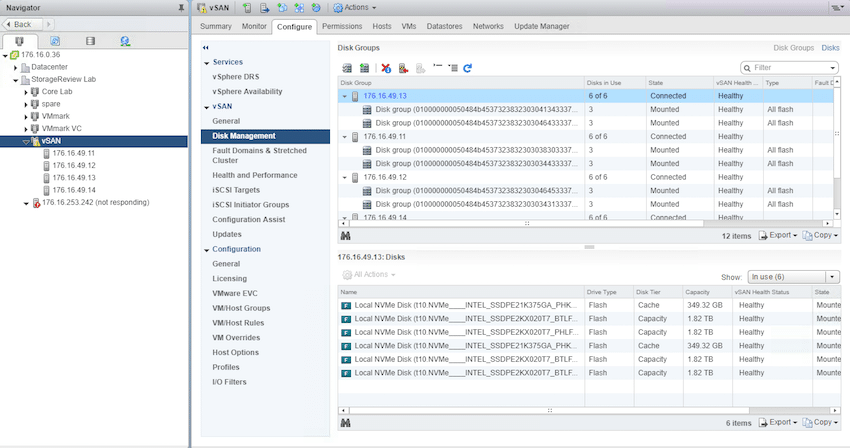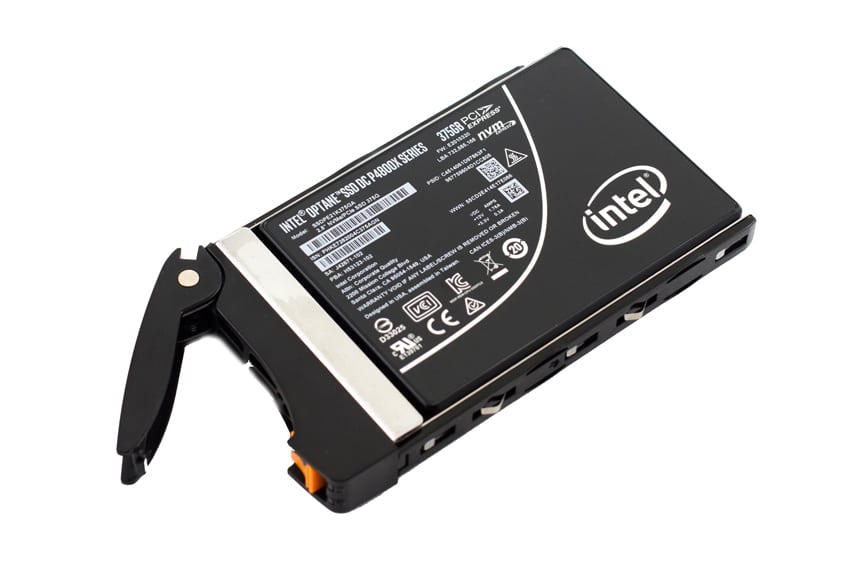We’ve tweeted about it and it’s been featured in our newsletter, but to share the news with the rest of our audience, we have been working on prepping a four node vSAN cluster. In partnership with Supermicro, VMware and Intel, we have several reviews and content pieces forthcoming that highlight vSAN capabilities across a broad spectrum of storage, interconnect, CPU and RAM configurations. Primarily we’ll be working within what’s dubbed Intel Select Solutions for VMware vSAN; but depending on timing and components, we may be able to expand into other areas including VMware tools like replication or VMware cloud options within AWS for instance.

Starting with the test platform, the vSAN nodes are based on Supermicro’s latest 2U 24-bay NVMe servers, the 2029U-TN24R4T+. Each is currently outfitted as an Intel Select Solutions for vSAN Base Configuration:
- 2 x Intel Xeon Gold 6152 processor, 2.10 GHz, 22 cores
- 384GB of RAM (12 x 32 GB 2,666 MHz DDR4 DIMM)
- vSAN disk groups, 2x per node:
- vSAN Cache tier: 2 x 375GB Intel Optane SSD DC P4800X Series NVMe SSDs
- vSAN Capacity tier: 4 x 2TB Intel DC P4500 Series NVMe SSDs
- Networking:
- Intel Ethernet Converged Network Adapter X710 10/40 GbE (dedicated link for VSAN, vMotion/VM traffic/Management split onto its own VLAN).
Roughly a year ago, VMware came out with day 0 support for Intel Optane. For vSAN this is an important development. Because of the two-layer storage configuration, vSAN can take full advantage of the small 375GB P4800X drives by letting them handle the bulk of the read/write operations in cache. From there vSAN backstops Optane with the capacity tier of 2TB P4500 SSDs. The current configuration has two disk groups per node, configured with one cache drive and two capacity drives in each one. The total vSAN cluster has 24 SSDs.

Supporting Optane on day 0 and having systems or vSAN Ready Nodes available on day 0 are slightly different things. Sure, anyone with hardware on the vSAN HCL could immediately go roll their own Optane systems, but as we know, most vSAN customers prefer to buy ready nodes or engineered solutions. This model makes consumption much easier via quicker time to deployment, along with the support and service that generally comes with fully certified nodes. The Supermicro nodes that we’re deploying meet this need and are fully patched and updated with the latest drivers and firmware from Supermicro, Intel and VMware.

Initial testing has shown very promising results. As we began stress testing the platform with early firmware, we were pushing in excess of 450k IOPS 4K read and over 200k IOPS 4K write. Bandwidth has also been fantastic, helping us push the limits of our 10Gb interconnects, with large-block 64K read speeds measured over 5GB/s and write over 1GB/s. As we continue to optimize and come closer to our final build we expect these numbers to change and improve.

Full testing is underway now, expect our deep dive reviews of this initial configuration in the coming weeks. We are also working with our partners on additional vSAN configurations and expect a deep series of vSAN-based content over the course of this year.
Resources




 Amazon
Amazon